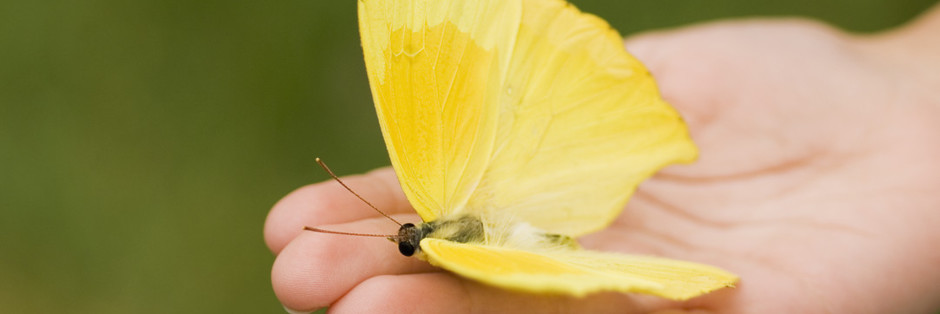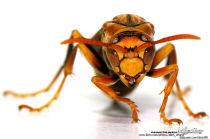The forests of Aquitaine, in south-west France, now play host to swarms of the Asian Hornet, Vespa velutina, which is believed to have arrived there "from the Far East in a consignment of Chinese pottery in late 2004
This is how the truth was distorted
When I first came upon the problem in France way back in 2010 or thereabouts I was visiting a relative hovel situated north of Bordeaux in France
statement 2009
Haxaire a Frenchman said he's now counted 85 "football-shaped" nests across the 40 miles that separate the towns of Marmande and Podensac "
in the Lot et Garonne department where the hornets were first spotted".
2004
Asian hornets will station themselves hovering at about 30cm from the
entrance to the honey bee colony where they pounce on returning
bees that are carrying pollen, fall to the ground with them,
cut off the head with their mandibles and transport them to a tree. Here they
remove the wings and legs before making a little “meatball” that they transport
back to their nest to feed their larvae.
Having
found a colony, often a bee hive, they will sometimes arrive in
numbers to take an easy food source one after another. The consequences for
the bee colony can be catastrophic if the flow of pollen into the
hive is severely disrupted. Over time it will result in the death of some or all
of the larvae and the queen will either stop or reduce
her egg production. This will lead to the decline of the colony, ageing
bees will die with few or no replacements to take their place. At best the
colony will be vulnerable to disease due to the dead larvae and the overall
weakness of the colony will lead to robbing. The colony will have little
hope of over-wintering.
Solutions: THIS IS THE MOST IMPORTANT TIME
in late March and April and MAY CHECK YOUR SHEDS AND YOUR EAVES FOR A SMALL QUEEN NEST THE SIZE OF SMALL ORANGE
Small nests with only a
Queen at the beginning of the season, can be destroyed using a powerful
aerosol wasp spray with caution.
THIS IS YOUR VERY LAST CHANCE TO GET A GRIP
Larger nests should be
destroyed as a matter of urgency by a competent person that is equipped
for the job. Your local pompiers may perform this
service, if not they will be able to give you the contact details of someone
that will.
Purpose-made traps as illustrated can be
placed anywhere where the Asian hornets are thought to be present and
importantly near to bee hives. The dimensions are very
important.
Detection
11. To improve the likelihood of early detection government will continue to raise public, beekeeper and other stakeholder awareness about this pest through a species alert ID/Identification sheet issued in 2011 by the NNSS which requested the public to report sightings to them via alert_nonnative@ceh.ac.uk providing a photograph and details of location. The public are also invited to send a suspect sample to the NBU laboratory for examination. If the evidence supplied by the public or a beekeeper suggests that the pest is likely to be an Asian hornet, a NBU Bee Inspector will investigate the sighting. An ID sheet and Alert poster have also been prepared have been/will be distributed to all relevant stakeholders.
ASIAN HORNET VIDEO LIBRARY
SOME SITES
Vespa-velutina
https://youtu.be/LapvBtRExSo THE MOST VISUAL
INSTRUCTIVE
https://www.youtube.com/watch?v=LapvBtRExSo
SPAIN
https://www.youtube.com/watch?v=phtjLpnzgJI
CAPTURE NEST GERMANY
TRAD GERMAN SKEP
ITALY
https://www.youtube.com/watch?v=lp3M6ox0tc8
Materials you will need to make a trap
:
- 1 x 2 Litre Plastic bottle
- 1 x 100mm PVC joint (for 100mm PVC pipe)
- 1 x 100mm PVC screw end cap for joint that will allow you to change the
attractant without releasing any hornets - 1 piece of metal grill to put over the attractant. This will prevent bees
and insects falling in the liquid - 1 piece of wood 20cm x 20cm
- Some steel wire, approx 60cm
- PVC glue
- Some silicone sealant
Translation of diagram /
document terms and wording :
Square wood roof 200 x 200mm –
Toit carré en bois de 200 x 200mm
Steel wire for fixing and
suspending the trap – Fil de fer de suspension et de fixation entonnoir /
chambre
The diameter of the aperture prevents the European hornet
from entering – La taille de l’orifice ne permet pas à Vespa crabro de
pénétrer dans le piège
Capture space – Chambre de
capture
Wire mesh grill (to prevent insects falling in the
attractant) – Grille de protection
5.5mm exit holes for other
species to escape. eg honey bees – 5.5mm trou de sortie pour les autres
espèces
Attractant : Sugar water, beer, jam etc –
Appât
|
Key Contacts National Bee Unit (NBU) Food and Environment Research Agency Sand Hutton York YO41 1LZ
|
Tel: 01904 462510 Fax: 01904 462240 General email: nbu@fera.gov.uk Web: www.nationalbeeunit.com
|
|
|
Bee Health Policy Programme Food and Environment Research Agency Sand Hutton York YO41 1LZ
|
Tel: 01904 465636 Email: beehealthinfo@fera.gsi.gov.uk Web: www.fera.defra.gov.uk
|
|
|
Department for Environment, Food and Rural Affairs (Defra) Contact details for Defra are available through www.defra.gov.uk
Contacts page |
Defra Helpline: 08459 335577 E-mail: helpline@defra.gsi.gov.uk Web: www.defra.gov.uk Out of hours contact: Tel: 020 7270 8960
|
|
|
Non-native Species Policy Team (Defra) 2 The Square Temple Quay Bristol BS1 6PN
|
||



